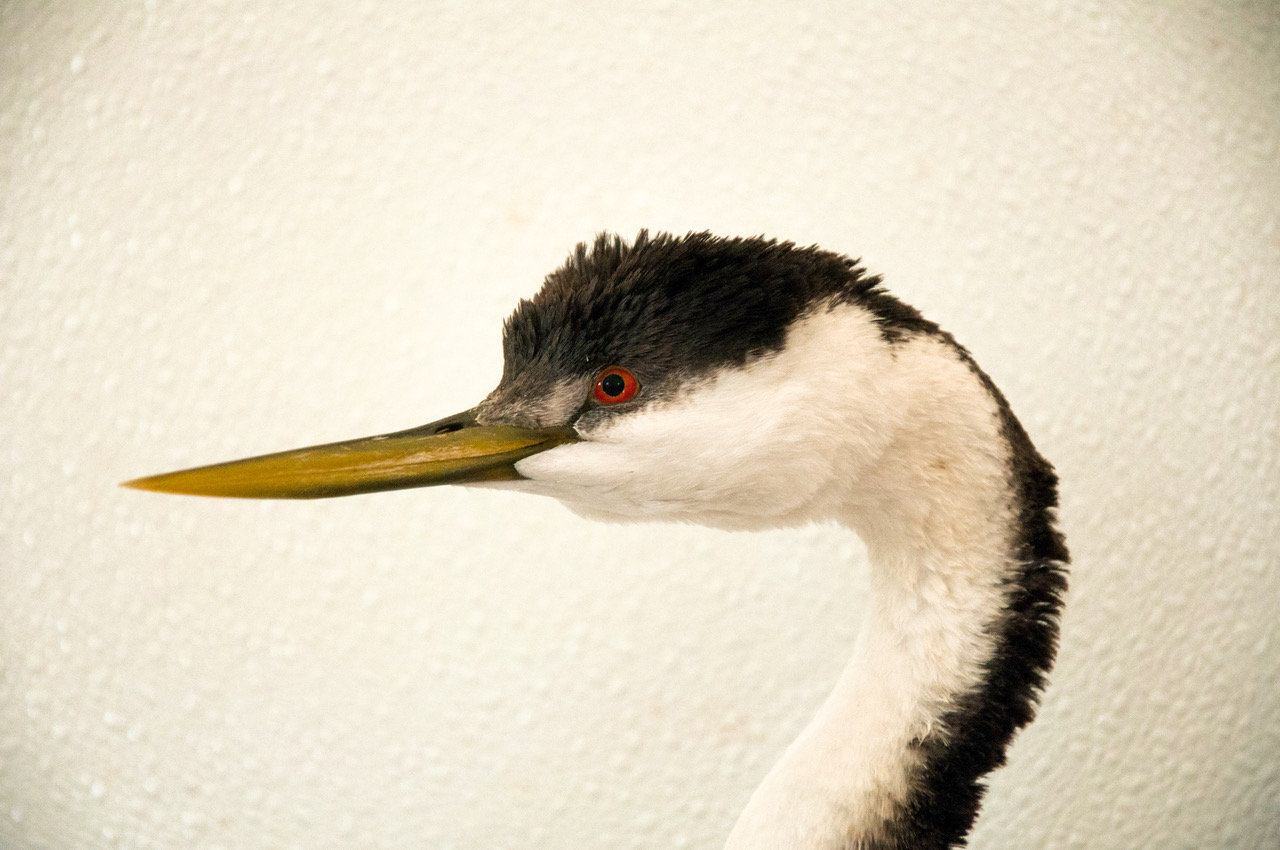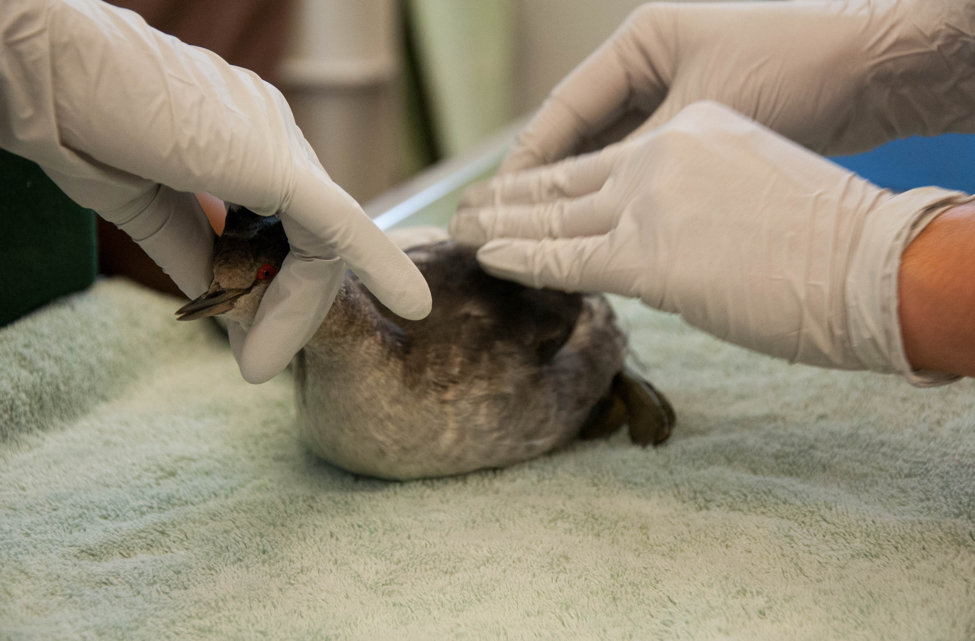Western Grebes Migrate into Santa Barbara

As Santa Barbara transitions into winter, various wildlife species adapt and move into the coastal waters for the season. Large populations of water birds such as western grebes migrate into the Santa Barbara Channel for wintertime. They are completing a migration pattern that can range from the Pacific Northwest in the spring and summer to areas along the Pacific coastline during winter months as far south as Baja California and Central Mexico.
Western grebes are among the most easily identified Santa Barbara bird residents. Possessing a stark contrast in coloration with a white chest and black flank, the birds stand out among the common western gulls and brown pelicans in local harbors. Perhaps the most prominent feature of the western grebe is its striking red eyes, a trait that is thought to possibly aid the bird in mate attraction and perhaps to benefit in long-distance vision during underwater dives for prey. A close relative to the western grebe, the Clark’s grebe appears almost identical but can be distinguished by its slightly more yellow bill and lack of black coloration around the eye seen in western species.
Western grebe migration is characterized by breeding and seasonal residence on freshwater ponds and lakes during spring months with a transition to becoming ocean-dwelling birds during the winter. When inhabiting lakes and shallow marshes, western grebes perform elaborate courtship displays, mimicking their potential mates in a behavior that resembles a complex, synchronized dance atop the surface of the water. Western grebes build floating nests alongside thick reeds and marsh plants, and mates take turns incubating their eggs for an average of 24 days. Upon hatching, newborn babies will hop onto their mothers’ backs, where they will be cared for and fed by their parents. It will be at least two months before the young are ready to fly on their own.
Going South
Western grebes begin their southern migration as early as September. They travel in large flocks at night while spreading out during the day to gather food. Their journey along the Pacific coast is long and arduous, and by the time many arrive in the Santa Barbara and Ventura areas they will be emaciated and severely underweight. Termed “failure to thrive”, this phenomenon commonly affects young, “first year” birds that are inexperienced in finding food sources in the competitive waters along their trek.
When the Santa Barbara Wildlife Care Network receives western grebes during this season, the first step taken is to perform an intake exam on the birds, which includes recording an initial weight and temperature. Grebes tend to have normal body temperatures of 102 to 107 degrees Fahrenheit. If upon examination a bird falls below this average, it will immediately be placed on a heat source to elevate its core temperature. Once a successful intake exam is performed, western grebes are placed on a tube-feeding regimen.

Tube feeding begins with water and a 50-percent dilute Emeraid piscivore diet, a mixture of proteins and short-chain amino acids that are easier for the emaciated birds to digest. Once a grebe is stabilized at the center, it will graduate to a tube-fed blended fish diet until it is interested in eating whole fish again on its own.
Throughout its stay at the center, a western grebe will be tube-fed every hour and 15 minutes, at least seven times throughout the day until it shows interest in eating on its own. Because wintering grebes are strictly pelagic birds, they are kept in unique enclosures termed “net-bottoms.” These contain a flexible net base to protect the delicate keel or breastbone that the birds prominently rest upon in the water. If a grebe at the center is deemed to be bright, alert, responsive, and non-oiled, it will receive frequent exercise in small swimming enclosures where it can preen itself, a critical step toward developing fully waterproof feathers for survival on the water.
Extended Care
The Santa Barbara Wildlife Care Network (SBWCN) will ultimately send all grebes that it receives to International Bird Rescue in San Pedro for extended care before release. Every week, a generous volunteer from the center makes the trek from Goleta to Los Angeles to provide these birds with further care and treatment. Although grebes during this time of year are most commonly seen suffering from “failure to thrive,” birds are occasionally brought into the center that have been found wounded or stranded in parking lots. Grebes will commonly mistake an aerial view of asphalt as a large body of water, and once they have landed on the solid surface, it is impossible for them to once again take flight due to their unique anatomy with legs so close to the rear of the body.
In 2017, the SBWCN has already treated 140 western, Clark’s, eared, horned, pied-billed, and red-necked grebes.







